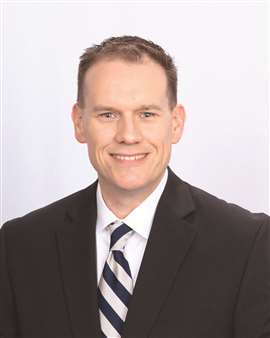Rockwell Automation offering solutions for CCS, hydrogen applications
November 11, 2024
An interview with Michael Klein, Strategy and Industry Marketing lead
Solutions like carbon capture and storage (CCS) are gaining momentum in energy discussions and Rockwell Automation, which provides automation and digital solutions for carbon capture, transportation and storage, as well as hydrogen production is one of the key companies in that field.
 Michael Klein
Michael Klein
With over 30 years in the industry, Michael Klein, who runs the Strategy and Industry Marketing team at Rockwell Automation, said the future of energy is about more than just renewables—it’s about how we transition to a sustainable energy ecosystem.
The Growing Importance of Carbon Capture
Klein’s team at Rockwell focuses on long-term strategies—typically spanning three to five years—that align Rockwell’s offerings with emerging market trends. A significant trend is the increasing interest in carbon capture, hydrogen projects, and overall decarbonization efforts across industries.
“Both carbon capture and hydrogen production require sophisticated compression technology and advanced processes,” he said. “The industry is still figuring out the best practices and efficiencies for these new technologies.”
Despite the promise of carbon capture, Klein acknowledges that the technology is not without its hurdles. One major issue is the speed at which companies can scale operations. Traditionally, oil and gas firms have relied on engineering, procurement, and construction (EPC) firms for project delivery, but this approach often overlooks the need for replicability.
“They (EPCs) build these massive complexes, and to replicate them is another massive project, and what these companies are seeing is these margins are very tight right now, as the technology is getting up to speed from a processing perspective, not the controls, like what Rockwell does, but the actual physical equipment.
“Imagine building a facility in Houston and then trying to replicate it in another industrial hub, say in China,” Klein said. “The supply chains, materials, and even labor forces differ significantly, complicating the scalability of carbon capture projects.”
The challenge is not just about building facilities; it’s also about creating a seamless operational framework that can integrate various technologies across different locations. Klein noted that many companies are working on direct air capture systems but struggle to visualize their operational capabilities when scaling from one to multiple facilities.
Another significant concern is the financial viability of carbon capture projects. As the technology stands, many companies are not turning a profit yet, heavily relying on government subsidies and incentives to bridge the gap. Klein emphasized the importance of balancing capital expenditures (CAPEX) with operational expenditures (OPEX) while continuously working on efficiency improvements.
“If funding dries up, and history shows us that it eventually does, companies need to be prepared to operate profitably,” he said. “This necessitates advanced technologies that can help them optimize both cost and efficiency.”
A Multifaceted Approach
Klein believes that Rockwell’s strategy in the carbon capture space is particularly unique. “We don’t want to put all our eggs in one basket,” he said. Instead of focusing solely on one technology or approach, Rockwell is committed to empowering companies with the tools and partnerships needed to navigate the complex landscape of energy transition.
This includes leveraging a comprehensive partner network that allows Rockwell to address various customer needs, whether through advanced automation solutions or cybersecurity measures to protect sensitive operational data. Klein pointed out that in a world increasingly reliant on remote operations, the security of data transmitted from facilities around the globe is paramount.
Rockwell is also exploring robotics as part of its carbon capture strategy. Klein highlighted an acquisition—Clearpath Robotics, a company specializing in autonomous rovers designed for remote inspections. These rovers can be equipped with a range of sensors for tasks like monitoring emissions, inspecting pipelines for leaks, and assessing the overall condition of facilities.
“The idea is to enhance both productivity and safety,” Klein said. “By using remote inspection technologies, we can significantly reduce the risks associated with sending human operators into potentially hazardous environments.”
MAGAZINE
NEWSLETTER

CONNECT WITH THE TEAM







